I think, the good starting point is to use VisionDataset class as a base. What we are going to use here is: DatasetFolder source code. So, we going to create smth similar. You can notice this class depends on two other functions from datasets.folder module: default_loader and make_dataset.
We are not going to modify default_loader, because it's already fine, it just helps us to load images, so we will import it.
But we need a new make_dataset function, that prepared the right pairs of images from root folder. Since original make_dataset pairs images (image paths if to be more precisely) and their root folder as target class (class index) and we have a list of (path, class_to_idx[target]) pairs, but we need (rgb_path, gt_path). Here is the code for new make_dataset:
def make_dataset(root: str) -> list:
"""Reads a directory with data.
Returns a dataset as a list of tuples of paired image paths: (rgb_path, gt_path)
"""
dataset = []
# Our dir names
rgb_dir = 'RGB'
gt_dir = 'GT'
# Get all the filenames from RGB folder
rgb_fnames = sorted(os.listdir(os.path.join(root, rgb_dir)))
# Compare file names from GT folder to file names from RGB:
for gt_fname in sorted(os.listdir(os.path.join(root, gt_dir))):
if gt_fname in rgb_fnames:
# if we have a match - create pair of full path to the corresponding images
rgb_path = os.path.join(root, rgb_dir, gt_fname)
gt_path = os.path.join(root, gt_dir, gt_fname)
item = (rgb_path, gt_path)
# append to the list dataset
dataset.append(item)
else:
continue
return dataset
What do we have now? Let's compare our function with original one:
from torchvision.datasets.folder import make_dataset as make_dataset_original
dataset_original = make_dataset_original(root, {'RGB': 0, 'GT': 1}, extensions='png')
dataset = make_dataset(root)
print('Original make_dataset:')
print(*dataset_original, sep='\n')
print('Our make_dataset:')
print(*dataset, sep='\n')
Original make_dataset:
('./data/GT/img1.png', 1)
('./data/GT/img2.png', 1)
...
('./data/RGB/img1.png', 0)
('./data/RGB/img2.png', 0)
...
Our make_dataset:
('./data/RGB/img1.png', './data/GT/img1.png')
('./data/RGB/img2.png', './data/GT/img2.png')
...
I think it works great) It's time to create our class Dataset. The most important part here is __getitem__ methods, because it imports images, applies transformation and returns a tensors, that can be used by dataloaders. We need to read a pair of images (rgb and gt) and return a tuple of 2 tensor images:
from torchvision.datasets.folder import default_loader
from torchvision.datasets.vision import VisionDataset
class CustomVisionDataset(VisionDataset):
def __init__(self,
root,
loader=default_loader,
rgb_transform=None,
gt_transform=None):
super().__init__(root,
transform=rgb_transform,
target_transform=gt_transform)
# Prepare dataset
samples = make_dataset(self.root)
self.loader = loader
self.samples = samples
# list of RGB images
self.rgb_samples = [s[1] for s in samples]
# list of GT images
self.gt_samples = [s[1] for s in samples]
def __getitem__(self, index):
"""Returns a data sample from our dataset.
"""
# getting our paths to images
rgb_path, gt_path = self.samples[index]
# import each image using loader (by default it's PIL)
rgb_sample = self.loader(rgb_path)
gt_sample = self.loader(gt_path)
# here goes tranforms if needed
# maybe we need different tranforms for each type of image
if self.transform is not None:
rgb_sample = self.transform(rgb_sample)
if self.target_transform is not None:
gt_sample = self.target_transform(gt_sample)
# now we return the right imported pair of images (tensors)
return rgb_sample, gt_sample
def __len__(self):
return len(self.samples)
Let's test it:
from torch.utils.data import DataLoader
from torchvision.transforms import ToTensor
import matplotlib.pyplot as plt
bs=4 # batch size
transforms = ToTensor() # we need this to convert PIL images to Tensor
shuffle = True
dataset = CustomVisionDataset('./data', rgb_transform=transforms, gt_transform=transforms)
dataloader = DataLoader(dataset, batch_size=bs, shuffle=shuffle)
for i, (rgb, gt) in enumerate(dataloader):
print(f'batch {i+1}:')
# some plots
for i in range(bs):
plt.figure(figsize=(10, 5))
plt.subplot(221)
plt.imshow(rgb[i].squeeze().permute(1, 2, 0))
plt.title(f'RGB img{i+1}')
plt.subplot(222)
plt.imshow(gt[i].squeeze().permute(1, 2, 0))
plt.title(f'GT img{i+1}')
plt.show()
Out:
batch 1:



...
Here you can find a notebook with code and simple dummy dataset.


